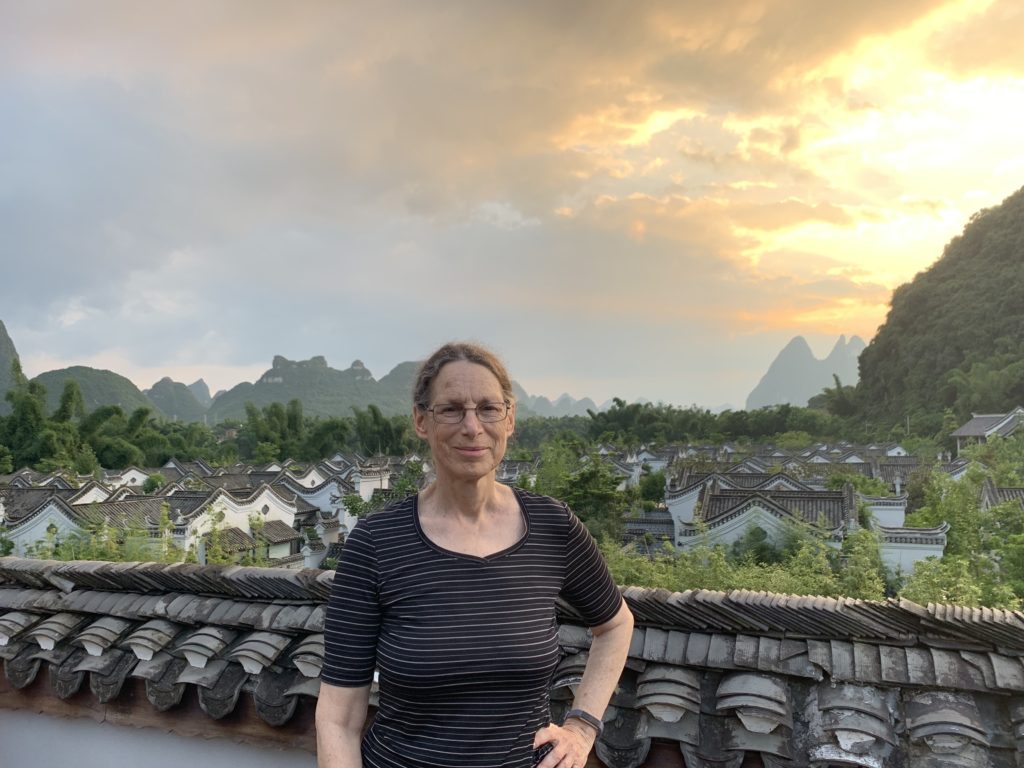
Iconic images when presented in reality sometimes disappoint. The shape and color of some famous place is so familiar and has been seen in so many manifestations that the actuality somehow is paler than what was envisioned. The karst mountains of Guilin, China, sharp green points jutting into the sky covered with trees and the sudden raw exposure of grey striated rock, exceeds expectations. I had imagined a line of mountains in either side of a river, as the common picture painted in travelogues is of the simple raft sailing on smooth water past fantasy mountains. But these remarkable limestone hills, carved by eons of water and wind, stretch over a very large area land area, encompassing many villages and towns, stretching into the distance, odd-shaped cones of earth and rock that expands our concept of what the natural world can create.
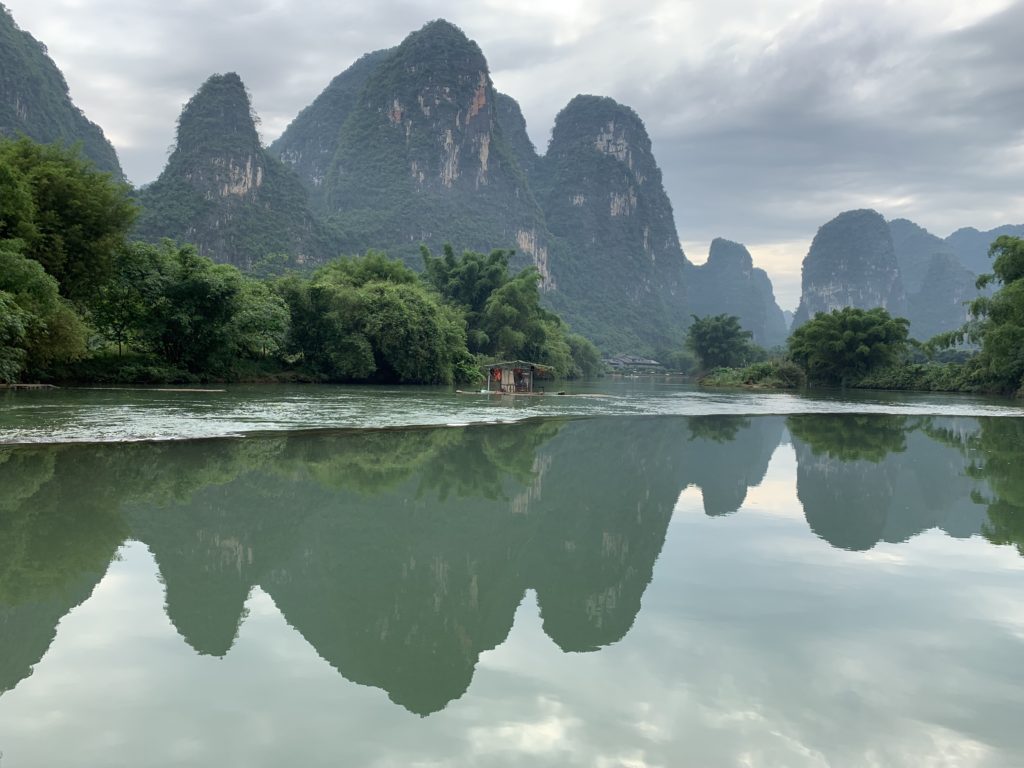
I asked our guide whether there were battles fought over this area through the millennia and was told that there were no natural resources to argue about so that it has been left alone. This undoubtedly accounts for the many indigenous people found here, geographically separated and speaking languages undecipherable to Mandarin speakers. And this is understandable in a land where to meet people in nearby villages means walking over a high sharp mountain path. Today, most villages are connected by the wide roads designed to bring in the 10,000,000 tourists, mainly Chinese, arriving each year to enjoy the magnificent scenery. They can’t be coming for the weather, which is hot, humid and rainy a good part of the time.

It is changing fast, a move supported by the central government, with large scale housing developments arising upon the private purchase of land once allocated to farmers by the same government. The local people here were mostly fishermen, raising and training cormorant birds to catch their fish at night, which was then sold in the marketplace. Any flat land is planted for rice and vegetable farming, fairly easy in a place of copious rains and heat.
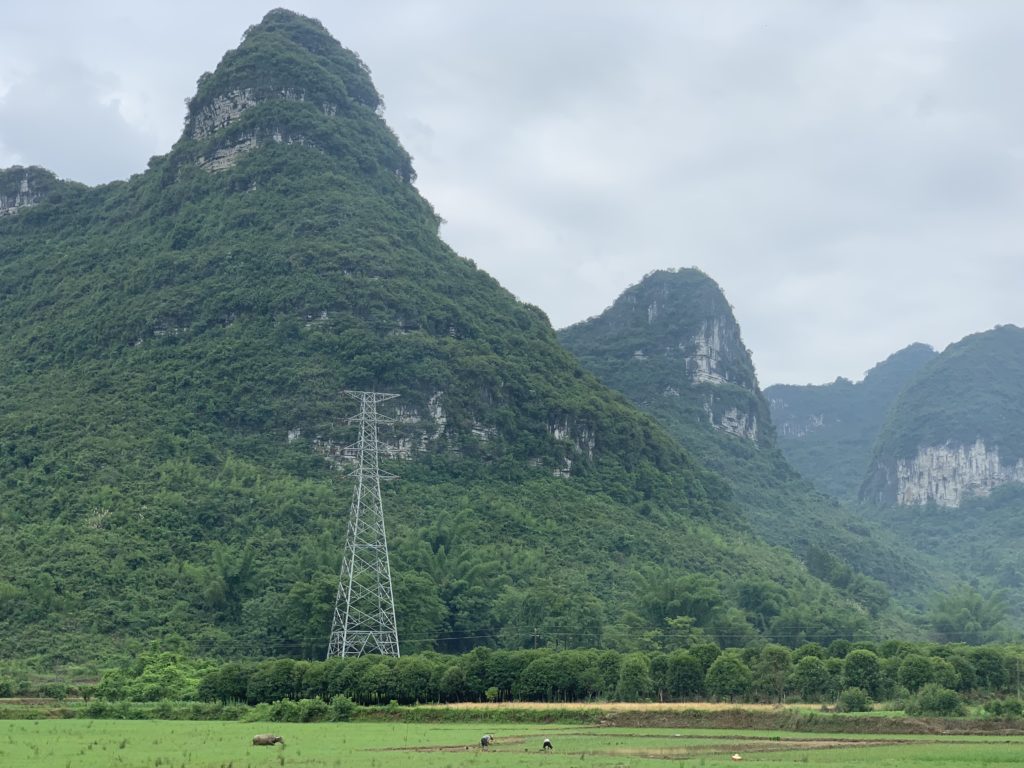
Our group leaves our beautiful Banyon Tree Resort, set on landscaped grounds by the river, in the morning so we are the first of the day to glide down this stretch of the River Li, with vistas of the sharply rising hills. It is warm and sultry as we slide down with a rush over some weirs designed to trap some still water to make fishing easier. We pass some small town along the way. These are not like rural villages in Southeast Asia, but a collection of concrete buildings, often 2-3 stories tall, plain and sturdy, unattractive and somewhat discordant in the country setting but obviously providing more secure housing for their families.

It is silent as we move along, 2 people on a bamboo raft lashed together with steel wire, poled by a boatman over water that is at points quite shallow. Beautiful and serene.
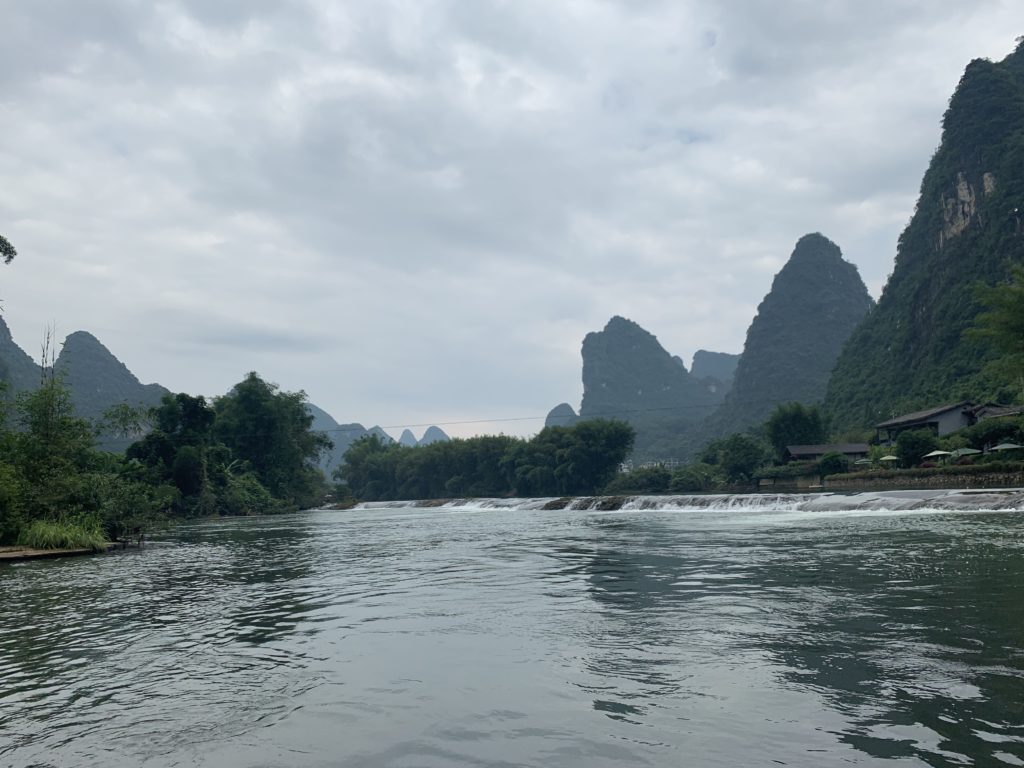
Back on land, we visit three small inland villages, where friendly older people are home taking care of young ones and making some extra income as they can. Each door has a red banner on each side, replaced each New Year, with a prayer for prosperity for their home. As we walk along the path between the concrete village houses, we can see each home has a refrigerator and a TV. We look inside one kitchen and see an electric rice cooker along with a wood burning hearth with a kettle on top as well as a one-burner propane gas ring.



We meet a couple weaving reed sleeping mats on an ancient loom, the woman shuttling in each length of stripped reed while her husband tamps it down. We are told it takes them 4 hours to complete each sturdy long-lasting mat and they can sell it in the marketplace for an equivalent of $50. Some of our group is invited to try this weaving technique, which takes skill and muscle.
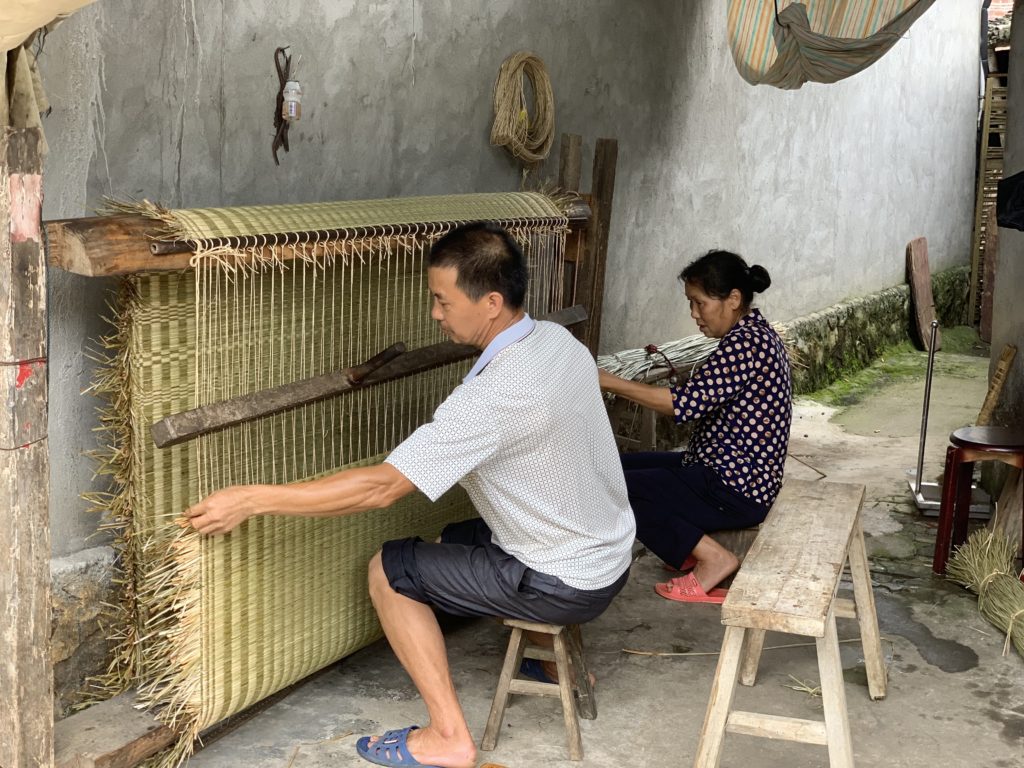
In another village, we meet an older 83 year old gentlemen who has woven traditional straw raincoats and hats during off-work times his whole life, as has his forebears before him. He demonstrates for us how waterproof this style can be as well as how he smokes his home-grown tobacco in a long pipe, perhaps just for tourist viewing. Inside his living home, his great-grandson plays on a couch with his large plastic water gun while across the road his family members are building another house, using bamboo scaffolding and a lot of man-power.
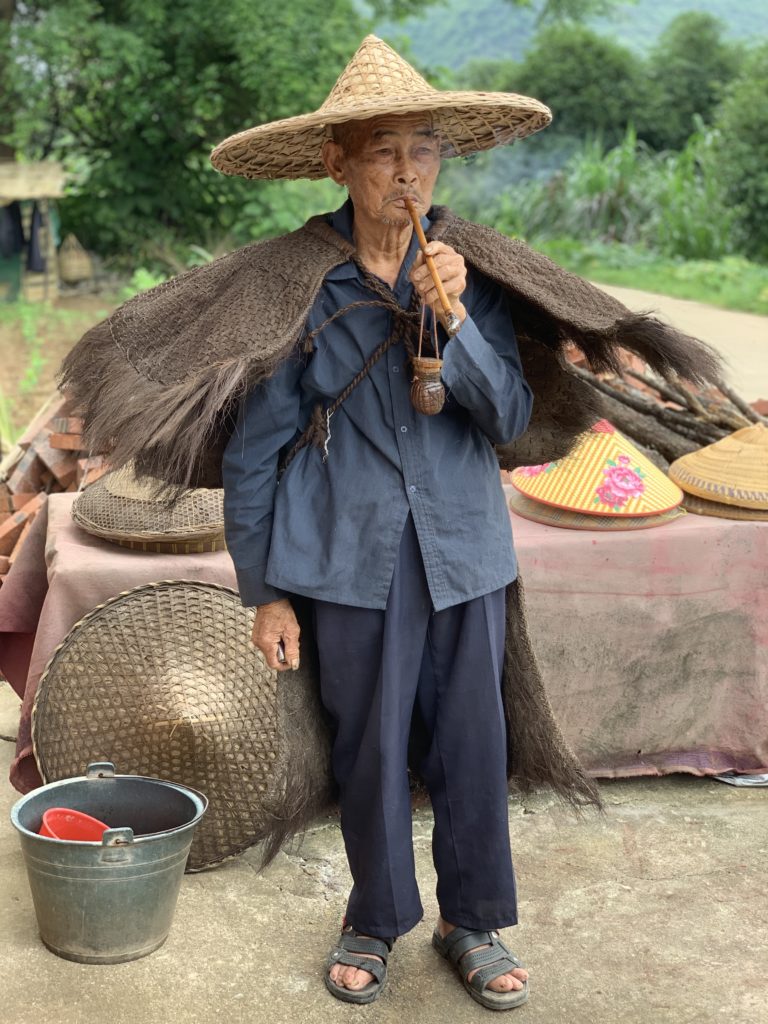
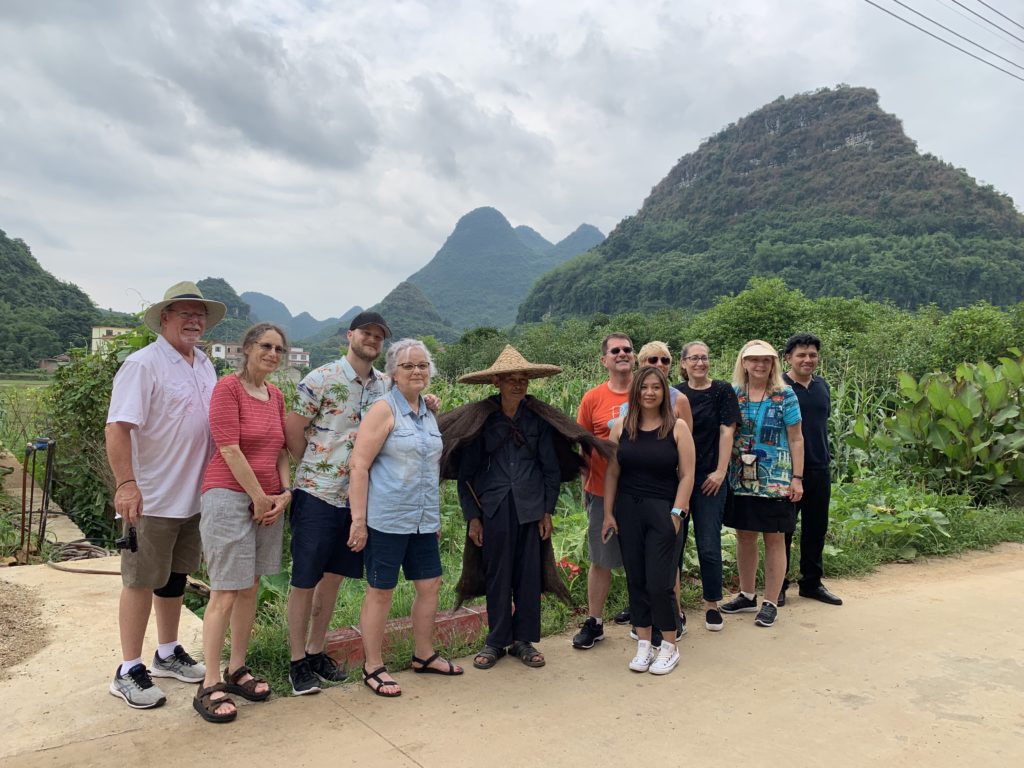


Our last stop is another village where lives a woman who previously spent her working life making fresh tofu and selling it in the marketplace to others. Now she just make it for her family and friends and shows us the process of grinding the beans with stone mortar producing the soy milk which is then boiled and coagulated with powdered gypsum (!) and finally pressed into the blocks which are used for cooking. I, along with one of our guides, tastes the fresh boiled soft tofu which is slightly bitter.
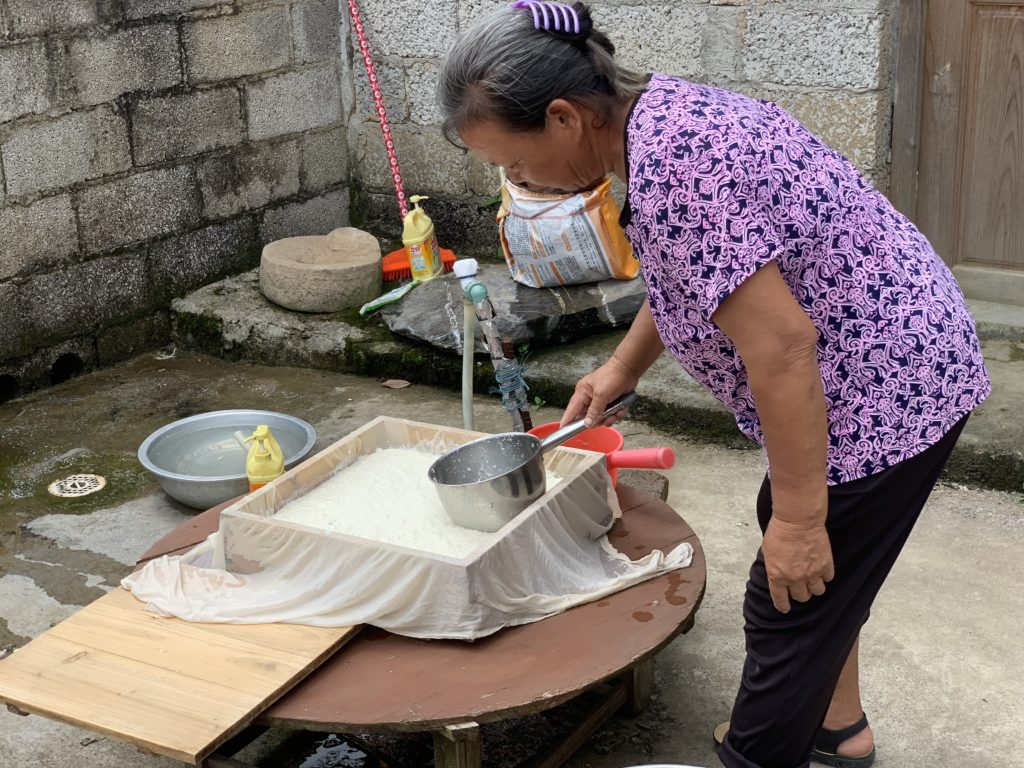
We visit a hotel created from an old sugar factory with a spectacular pool and buildings maintaining their original industrial form but transformed inside into luxury accommodations where we sit gratefully in air-conditioned comfort and enjoy mango-passion fruit iced smoothies.

This is an area of contrasts —the main town, Yangshuo, with ugly garish signs and buildings created to supply the Chinese tourist industry, while inland there remain old customs and traditions in more prosperous living conditions, and all set in the magnificent fantasies of nature.
Back at the hotel, I take a swim in an infinity pool overlooking the spectacular mountains and then enjoy another multi-course dinner, with, once again, food combinations that I have not seen before. All is good.
